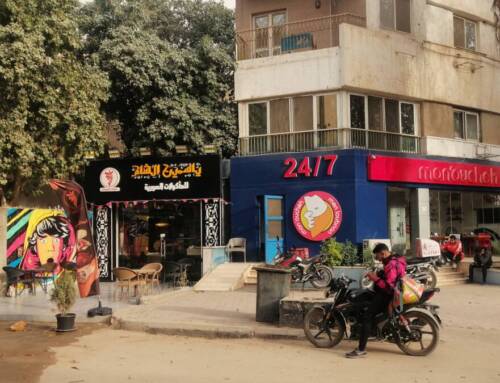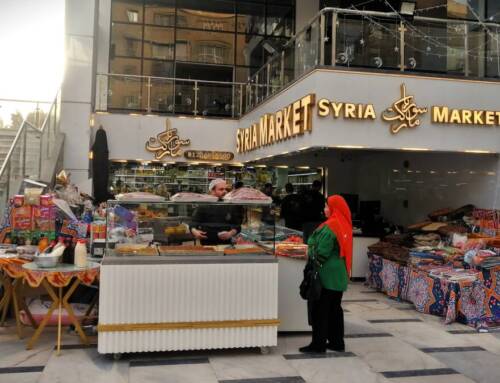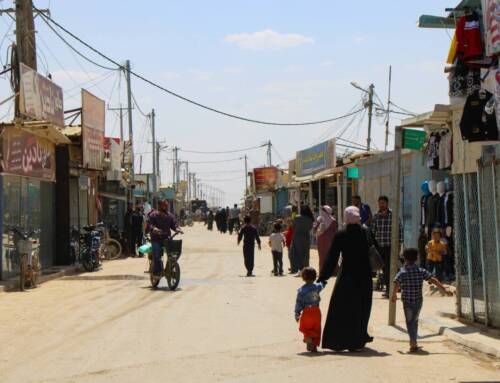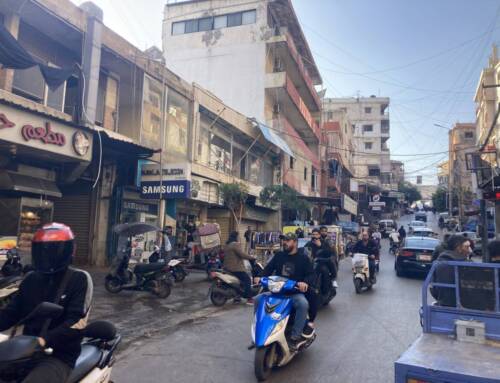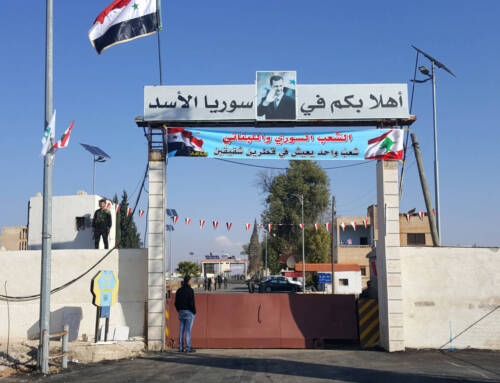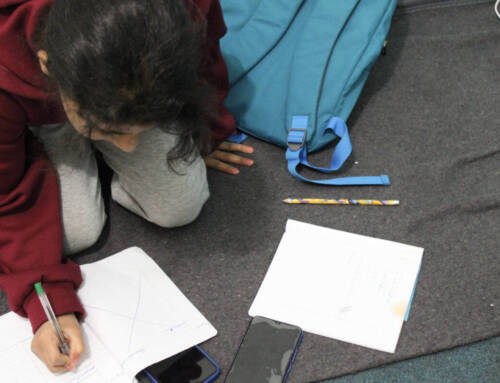UNHCR’s Harper: ‘You are only a refugee as long as you have no other real options’
December 11, 2013 Since March 2011, an estimated 567,000 Syrian […]
11 December 2013
December 11, 2013
Since March 2011, an estimated 567,000 Syrian refugees have crossed the border into Jordan. Today, 117,000 live in the sprawling Zaatari refugee camp in Mafraq province, a few kilometres from the Syrian border.
As Zaatari grew into the world’s second-largest refugee camp and Jordan’s fourth-largest population center, the UN has built a second camp east of Amman in Azraq, which has yet to open, but is poised to accept up to 120,000 additional refugees.
Balancing the support for the camps as well as Syrians living around Jordan, the UN’s refugee agency has had to adapt and learn as the condition of Syrian refugees in Jordan and future prospects change.
Zaatari camp flooded in January after days of heavy rain and snow. The camp, which now holds 117,000 refugees, is expecting more rain and snow this evening. Photo courtesy of UNICEF.
Andrew Harper is the UNHCR’s representative in Jordan. One of his roles is to coordinate the Syrian refugee response efforts in the Hashemite Kingdom.In a conversation with Syria Direct’s Gioia Forster, he talks about the challenges of running a camp housing Syrians “who have been bombed for two years and have very little respect for authority,” and his hope Zaatari camp will not be a permanent settlement.
Q: What would you say are the biggest challenges UNHCR in Jordan is facing at the moment?
A: It is probably the unknown. We don’t know how long the situation is going to continue on in Syria; we don’t know how many more Syrians are going to flee across the border and in what condition; we don’t know how strong the donor support will be for Jordan and the humanitarian response going into 2014 and 2015.
It has been fairly generous to date, relative to other operations around the world. So we are not necessarily complaining – we received about half the money that we were actually after – but that is what our job is. The question is whether we can continue to hold the interest of the international community to support Jordan and other countries going into 2014 and 2015. And it is going to be a challenge because normally what happens is that the international community is very interested for six months, maybe a year, and then it starts dropping off, and so what happens then is that the money also drops off.
But countries such as Jordan will still be expected to continue to host hundreds of thousands of refugees. So that will be a challenge – trying to make the operation more sustainable, more cost effective.
So we are going pretty well. The challenge remains basically the resources and the political situation: continuing to encourage states surrounding Jordan to keep the borders open, and to allow refugees to come across. But the biggest challenge is to see a solution inside Syria. We all want Syrians to be able to go home in safety and dignity at some point.
Q: Do a lot of the refugees return to Syria?
A: In any refugee situation anywhere in the world you have refugees fleeing and also returning. People return for any number of reasons: they may have left family members back there; they might quite justifiably prefer to live back in their homes in Syria – if the fighting has moved on – than living in a refugee camp; they could have gone back to harvest their crop; they may have gone back to sell things and then come back. So there are a host of reasons why people do go back.
But obviously one of the main causes is that you are only a refugee as long as you have no real other options. Because, obviously if you can go back, you do go back.
Q: When will the new camp in Azraq be opened?
A: The camp will open when it needs to be opened. What we are saying to the government is that we are ready to receive refugees there if necessary. Let’s say that over the last 14 months since Zaatari was opened we have had something close to 350,000 people move there.
But of that 350,000, probably 250,000 have moved on. So there is a natural progression whereby people come to the camp and then often leave the camp. That is what we are seeing at the moment, we’re seeing a decrease in numbers in the camp. That gives us more capacity.
In addition we have Azraq. We have invested a lot of money into it, we are very well prepared. One of my challenges now is how to much invest in Azraq, given the relatively low numbers that are coming across at the moment. We also have capacity in Zaatari. We have got staff members that were deployed to Azraq but there are no refugees there at the moment. So we are completely ahead of the curve – this is an unusual situation for a refugee response that we are actually better prepared than what the needs are.
Q: Do you think there were a lot of lessons learnt from Zaatari?
A: We already knew what the lessons were. One of the challenges was that we were getting 3,000 people per night and we had basically no money to establish a refugee camp. The initial plan was to build a camp for 5,000 people and then for 10,000 people… I know that UNHCR, UNICEF and WFP were borrowing money from other operations from around the world to pay for it.
We were fairly desperate there – we knew we would get through it, but it was fairly desperate when you are getting 3,000 to 4,000 people a night and you do not have any money. And you have the world’s attention on how the response is going. But we got through it.
And also, it takes a while for a community sense and ownership to be developed in a refugee camp, and if you have been bombed for two years and you have very little respect for authority, which is the case for many of them, then that lack of respect for authority also transcends into when in the refugee camp.
They will take things, they will look at what they can do to support their family in an extreme situation without real due consideration of the public good. And so what we are finding is that we would be putting up a communal kitchen or toilets or something like that and the next day everything will be dismantled and things will be taken back to their own tents.
So what have we learned? We have learned to use more space, not to have people so closely put together, so we have established separate villages in Azraq.
We have put in all the infrastructure – the roads, the drainage, we have got the registration centres and distribution centres already up, we have got the schools already up, we have got security already up, we have got the coordination structures. But I think this is also just the benefit of having time and money; we did not have that luxury with Zaatari.
Q: For instance, you have decided to use T-shelters in Azraq, instead of tents or caravans as in Zaatari…
A: They are slightly cheaper than caravans, which are about $2,200, but more expensive than tents, which are about $500. And they often have more space than the caravans as well. They are quite big inside.
We would be pretty supportive of refugees taking these back into Syria. They would be able to dismantle them because they come in kit form as well, and we would provide the trucks. It is the same as Zaatari – we do not want to create a permanent refugee camp. Jordan has enough refugee camps.
Q: How would you compare Jordan’s response to the refugee situation compared to Lebanon and Turkey?
A: If you look at the initial approach: Turkey put everyone in refugee camps as soon as they arrived, that was their default. Jordan did whatever it could to avoid refugee camps until the host communities were really overwhelmed. Jordan has, despite being in the Middle East, no water and no oil; it has its own economic, social and security challenges and it kept its border open while others were closing theirs.
I think Jordan has been fantastic and has shown up a lot of other countries around the world, including in Europe, Australia, the US and elsewhere, about how they should handle refugees. And it [the refugee situation] has contributed to an increase in the national debt, as you see the government cutting down on subsidies and increasing taxes – it is not a direct correlation but it does demonstrate that Jordan as a whole is suffering. This despite the fact that Jordan took on another 600,000 people who are in need of protection. So I think they have done an excellent job. I think Jordan, in regards to the economic situation, was probably the least able to do it.
Like Syria Direct on Facebook or follow us on Twitter.



